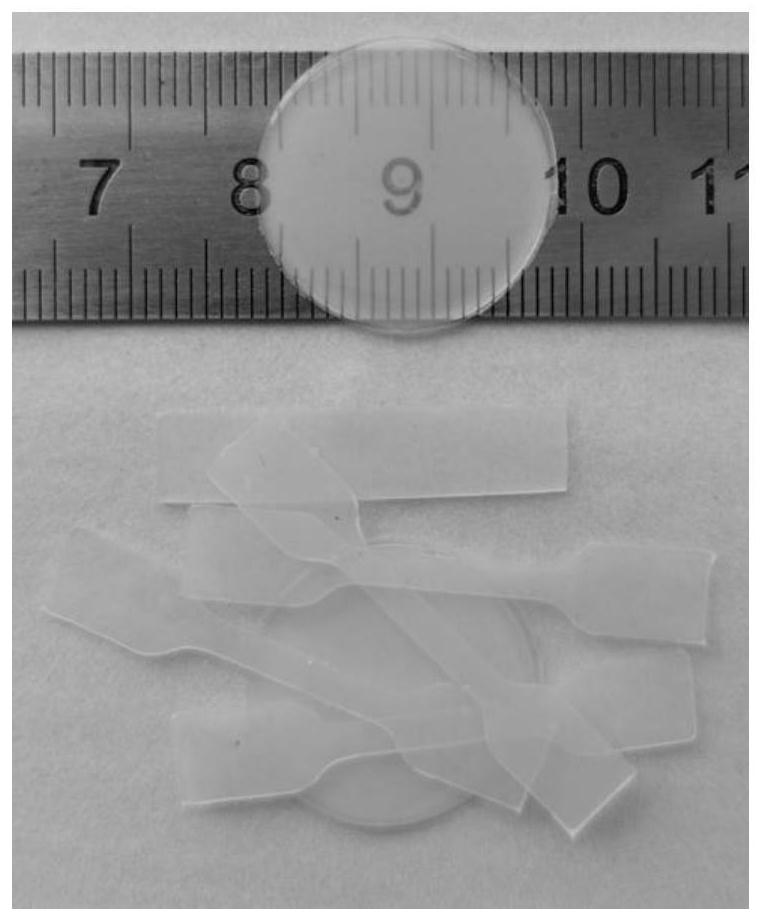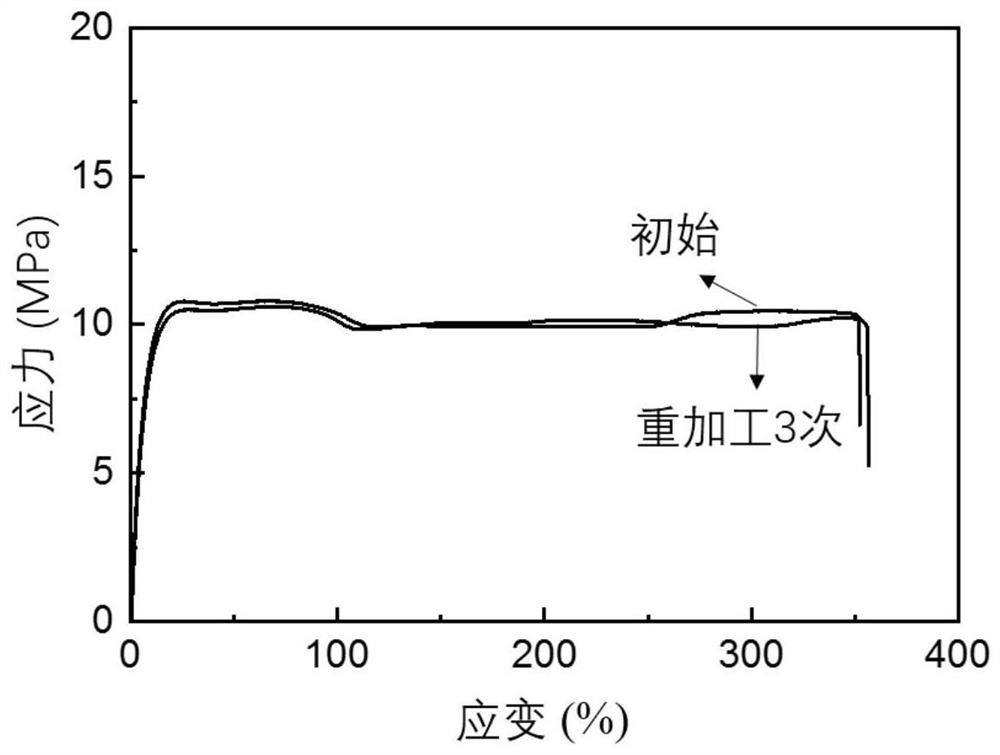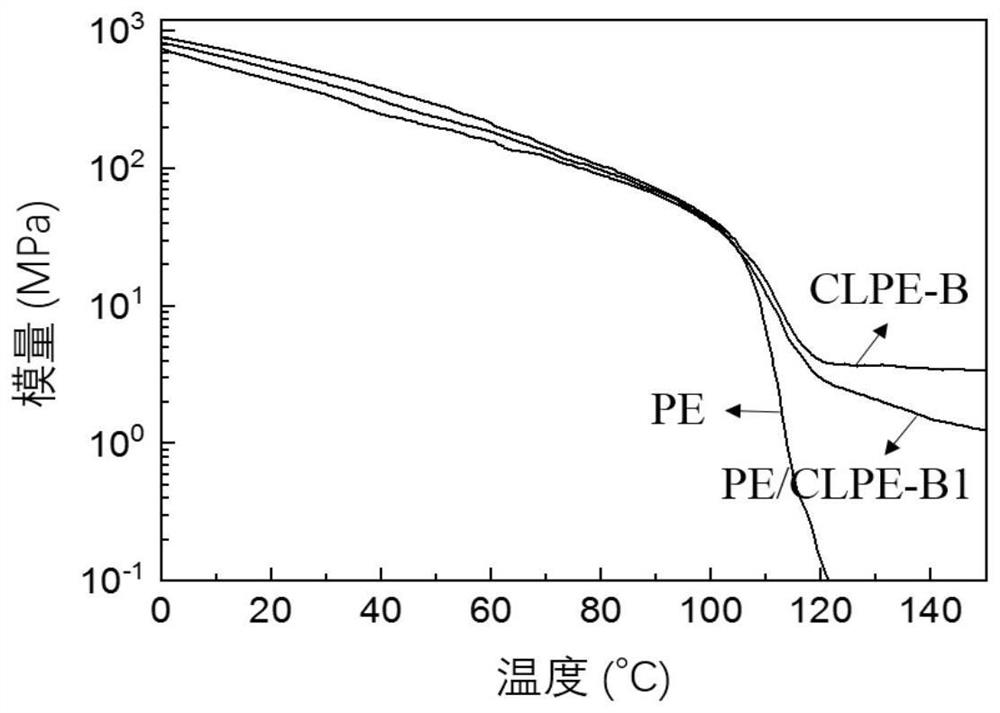Dynamic covalent cross-linking material for enhancing polyethylene performance and preparation method and application thereof
A covalent cross-linking and dynamic cross-linking technology, applied in the field of polymer materials, can solve the problems of increasing the processing difficulty of cross-linked polyethylene materials, restricting the recycling and reuse of cross-linked polyethylene, and achieving excellent creep resistance. , The effect of polyethylene performance improvement and good operability
- Summary
- Abstract
- Description
- Claims
- Application Information
AI Technical Summary
Problems solved by technology
Method used
Image
Examples
Embodiment 1
[0038] The synthesis of embodiment 1 borate-containing polycyclooctene PCOE-B
[0039]
[0040] Take a 250 mL round bottom flask, add 4.40 g of cyclooctene, 1.66 g of cyclooctene borate monomer (compound 1), 100 mL of anhydrous dichloromethane, and stir at room temperature. 8.5 mg of Grubbs second-generation catalyst (Grubbs G2) was dissolved in 5 mL of dichloromethane and added to the monomer solution. After reacting at room temperature for 6 hours, 10 μL of vinyl n-butyl ether was added to terminate the reaction. The reaction liquid was dropped into anhydrous methanol to precipitate the polymer, and after vacuum drying at 40° C. for 12 hours, 5.56 g of the product was obtained, with a yield of 92%.
Embodiment 2
[0041] The synthesis of embodiment 2 borate-containing polyethylene PE-B
[0042]
[0043] Take a 150mL thick-walled explosion-proof pressure-resistant bottle, weigh cyclooctene copolymer PCOE-B (0.22g), and dissolve it with 10mL o-xylene. Add p-toluenesulfonyl hydrazide (1.86g, 10mmol), 2,6-di-tert-butyl-4-methylphenol (17.6mg, 0.08mmol), triethylamine (1.01g, 10mmol), tighten the bottle mouth to The bottle was sealed and heated to 120°C for 12 hours. After the reaction, the reaction solution was added dropwise into 100 mL of anhydrous methanol to precipitate a polymer, and vacuum-dried at 60° C. for 12 hours to obtain 0.22 g of the product, with a yield of 100%.
[0044] The second part of the synthesis of dynamically cross-linked polyethylene
Embodiment 3
[0045] The synthesis of embodiment 3 linking agent
[0046]
[0047] Synthesis of 1,6-hexanediboronic acid (2): Take a clean 250mL three-necked round-bottom flask, a spherical condenser, a 100mL constant pressure dropping funnel, apply vacuum silicone grease to the contact part of the grinding port, and inject nitrogen gas after the instrument is assembled. Reactants, solvents, etc. were all added under nitrogen atmosphere. 1,6-Dibromohexane (7.32g, 30.00mmol) was dissolved in 60mL of anhydrous tetrahydrofuran and transferred to a constant pressure dropping funnel, and 2.16g (90.00mmol) of magnesium powder was weighed and added to the flask. Open the constant pressure dropping funnel, drop about 10mL of 1,6-dibromohexane solution into the round bottom flask, heat rapidly to reflux the solvent. Add the remaining 1,6-dibromohexane solution dropwise. During the process, keep the solvent in a slightly boiling state. After the dropwise addition, continue to heat and reflux for ...
PUM
| Property | Measurement | Unit |
|---|---|---|
| tensile strength | aaaaa | aaaaa |
| toughness | aaaaa | aaaaa |
| elongation | aaaaa | aaaaa |
Abstract
Description
Claims
Application Information
 Login to View More
Login to View More - R&D
- Intellectual Property
- Life Sciences
- Materials
- Tech Scout
- Unparalleled Data Quality
- Higher Quality Content
- 60% Fewer Hallucinations
Browse by: Latest US Patents, China's latest patents, Technical Efficacy Thesaurus, Application Domain, Technology Topic, Popular Technical Reports.
© 2025 PatSnap. All rights reserved.Legal|Privacy policy|Modern Slavery Act Transparency Statement|Sitemap|About US| Contact US: help@patsnap.com



